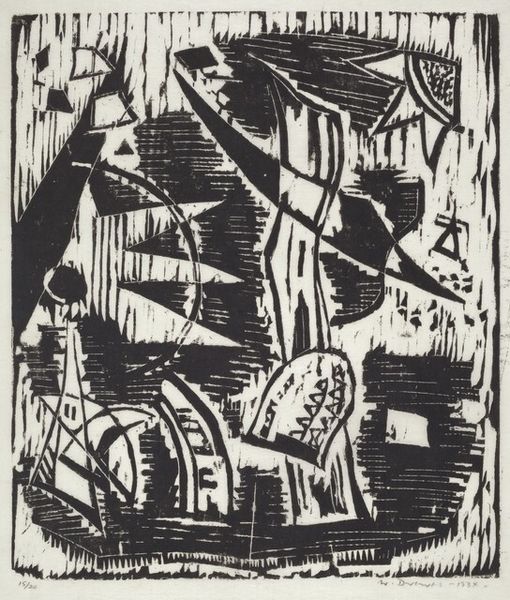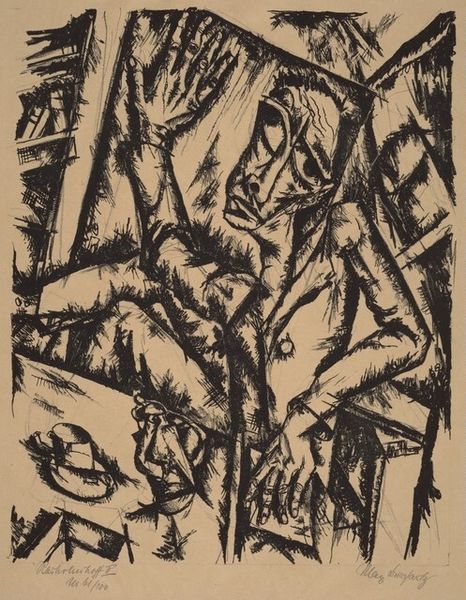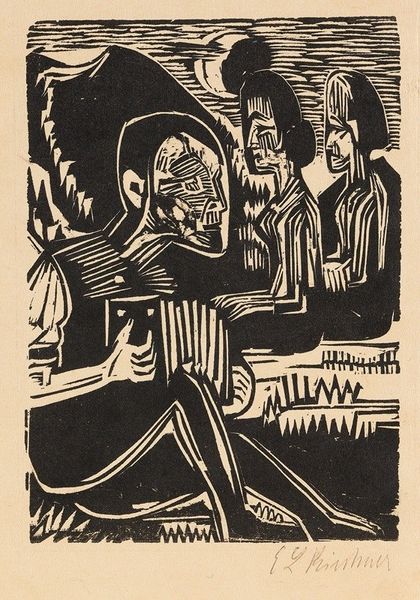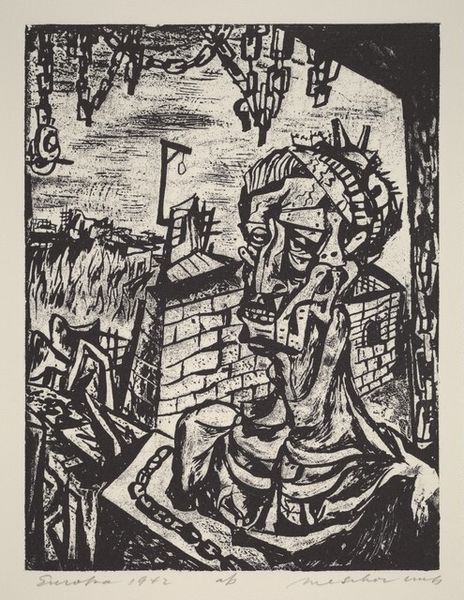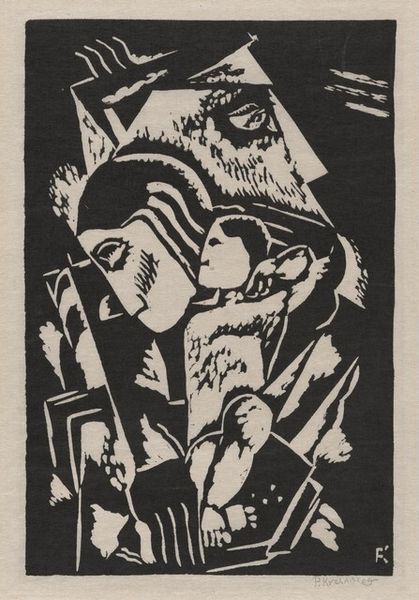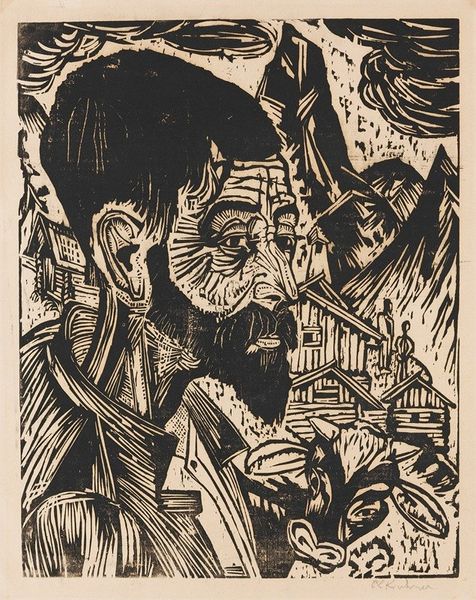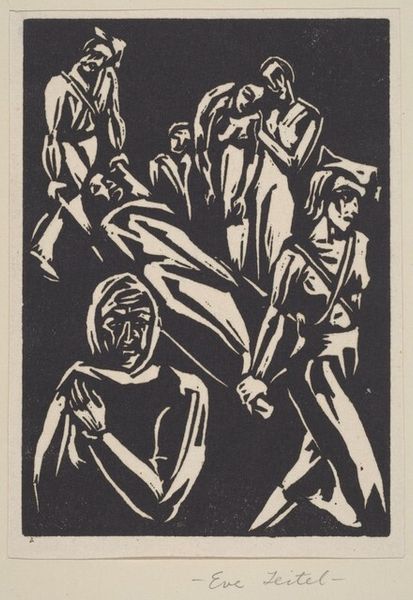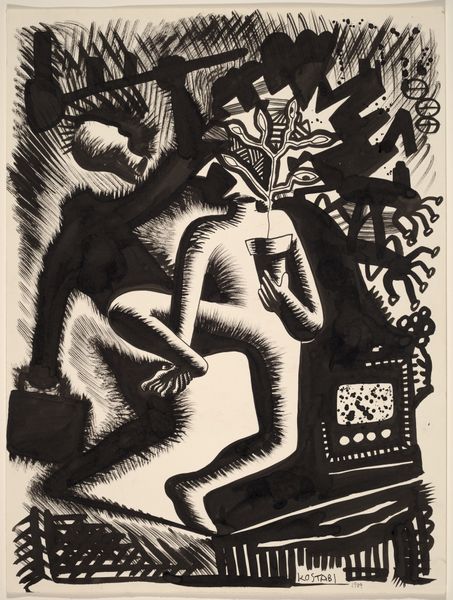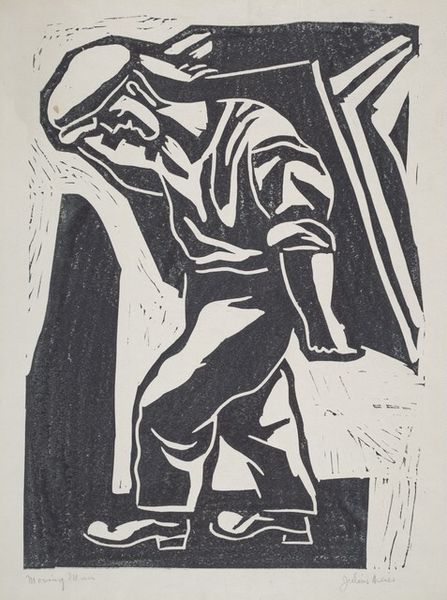
Copyright: Public Domain: Artvee
Curator: Let's take a look at Arnold Peter Weisz-Kubínčan's powerful ink drawing, "Protest," created between 1943 and 1944. What's your immediate reaction? Editor: Raw. The stark black ink, the agitated lines… it feels like a scream captured on paper. There’s a frenzy in the mark-making. Curator: It certainly reflects the turmoil of the period. Weisz-Kubínčan, a Jewish artist living in Nazi-occupied territory, created this work under immense pressure and fear. The act of drawing itself became a form of resistance. Editor: I'm struck by the intensity of the material – just ink, seemingly simple. Yet, he achieves so much texture, so much implied movement. Notice how the thickness of the lines varies, creating shadows and emphasizing certain forms. What paper would he have used at this time, do you know? Access must have been limited, another layer of constraint... Curator: Exactly. It’s a testament to his skill and the sheer necessity of expression. The composition is equally significant. A central figure with a raised fist dominates, a classic symbol of defiance. But look closer, and you see figures in the background, perhaps representing the oppressed, almost swallowed by the chaos around them. It speaks volumes about the social climate of the time and artistic license as freedom of expression. Editor: That raised fist... it’s not just a symbol; it’s rendered so physically, almost desperately. You can see the tension in the arm, the curve of the fingers. It conveys the physical effort and the inherent danger of public dissent. Also notice the almost feverish lines above it – an implosion of injustice raining down on all involved, maybe. It makes you wonder about the kind of tools that were available too, this really bold style speaks of using minimal means. Curator: Absolutely, and the artist’s expressive style heightens the emotional impact. His expressionistic leanings create an almost visceral reaction to the subjects of the piece and invites deeper reflection. Weisz-Kubínčan risked his life to create art that documented the horrors of his time. "Protest" serves as a historical record of oppression and courage and speaks loudly in artistic terms. Editor: It really does – it serves to tell how such rudimentary tools and such basic materials can deliver powerful political sentiment; as art should. It encourages more dialogue to question society. Curator: Agreed, it’s a haunting, but ultimately inspiring, work of art. Editor: Definitely, the social impact of Weisz-Kubínčan's artistic process transcends the sum of its simple material parts.
Comments
No comments
Be the first to comment and join the conversation on the ultimate creative platform.
